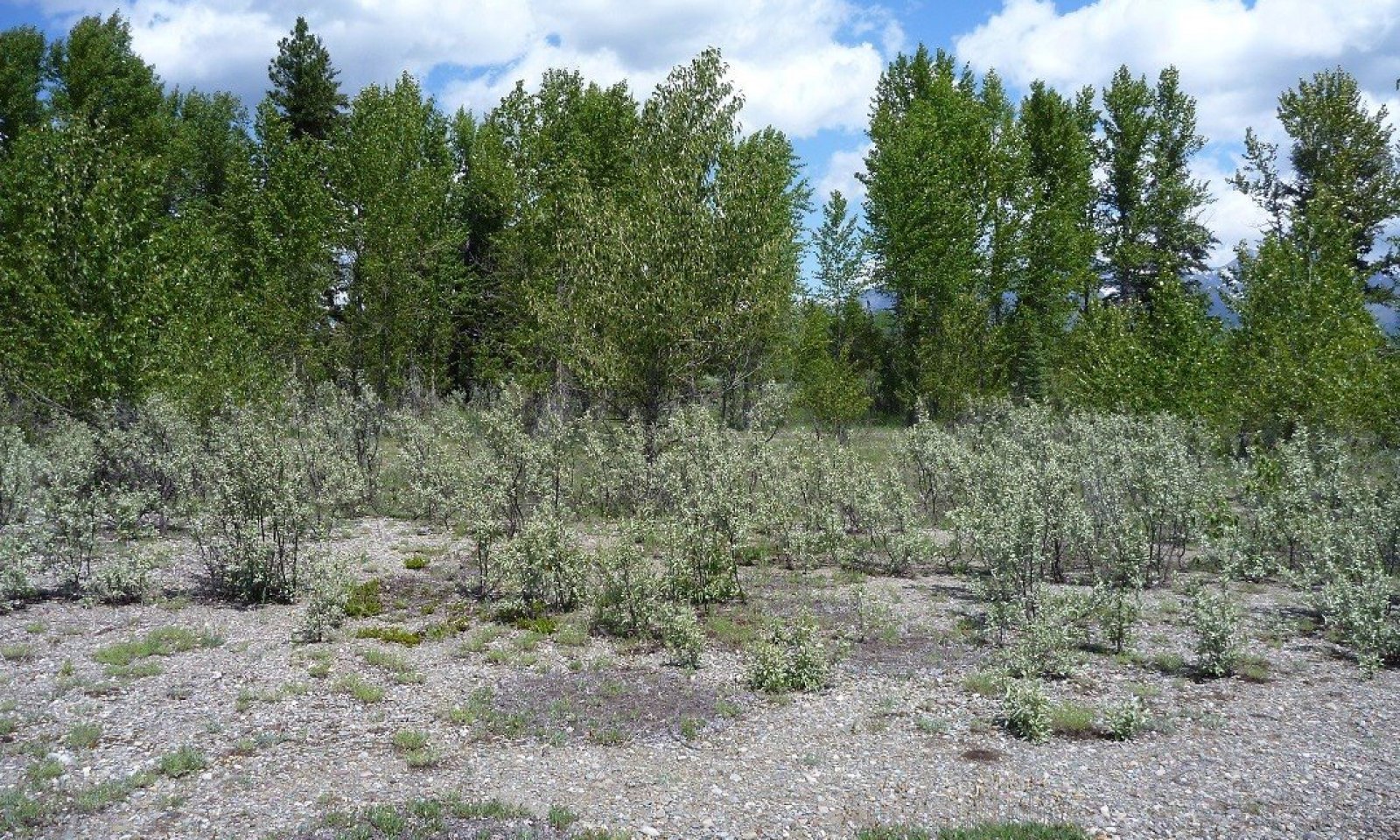
Montane Deciduous Alluvial Flood Plain black cottonwood (paper birch)/redosier dogwood Populus balsamifera ssp. trichocarpa (Betula papyrifera)/Cornus sericea ssp. sericea
Scenario model
Current ecosystem state
Select a state
Management practices/drivers
Select a transition or restoration pathway
- Transition T1A More details
- Transition T2A More details
-
No transition or restoration pathway between the selected states has been described
Target ecosystem state
Select a state
Description
This represents the historic state in which there are no weedy species present at the site. The community is the same composition as currently but without any weedy species.
Submodel
State 2
Current Potential State with Very Low Cover of Weedy Species



Description
This represents the current reference state in which the same dominant species exist as in State 1.0 but there is a low presence of weedy species.
Submodel
Mechanism
This represents the pathway from the historic state 1.0 without any weedy species present in the vegetation community to State 2.0 in which there are very low covers of weedy species present in the vegetation community.
Model keys
Briefcase
Add ecological sites and Major Land Resource Areas to your briefcase by clicking on the briefcase (![]() ) icon wherever it occurs. Drag and drop items to reorder. Cookies are used to store briefcase items between browsing sessions. Because of this, the number of items that can be added to your briefcase is limited, and briefcase items added on one device and browser cannot be accessed from another device or browser. Users who do not wish to place cookies on their devices should not use the briefcase tool. Briefcase cookies serve no other purpose than described here and are deleted whenever browsing history is cleared.
) icon wherever it occurs. Drag and drop items to reorder. Cookies are used to store briefcase items between browsing sessions. Because of this, the number of items that can be added to your briefcase is limited, and briefcase items added on one device and browser cannot be accessed from another device or browser. Users who do not wish to place cookies on their devices should not use the briefcase tool. Briefcase cookies serve no other purpose than described here and are deleted whenever browsing history is cleared.
Ecological sites
Major Land Resource Areas
The Ecosystem Dynamics Interpretive Tool is an information system framework developed by the USDA-ARS Jornada Experimental Range, USDA Natural Resources Conservation Service, and New Mexico State University.
